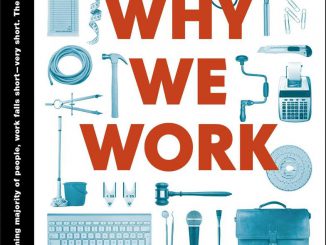
Blog van Will Ashworth op investopedia.com, juli2016. Any company that’s truly interested in customer satisfaction must first meet the needs of its employees. A business whose stock price has risen consistently over time has surely satisfied all its stakeholders.
Evaluating stocks involves two types of analysis: fundamental and technical, but there is also qualitative analysis, a subjective area that is sometimes referred to as soft metrics. This refers to aspects of a public company that aren’t quantifiable or easily explained by numbers. In general, it’s an underappreciated and underutilized side of fundamental analysis.
The Usual Suspects
When conducting qualitative analysis of a company, most investment professionals look at the business model, competitive advantage in the industry, management and corporate governance. This helps to determine how a company makes money, its uniqueness versus the competition, which people are making the decisions and how they treat ordinary shareholders. Gathering all of this data can provide a better idea of how a company intends to grow its business while rewarding shareholders.
However, it isn’t the entire picture. Touchy-feely subjects like satisfying the customer, rewarding employees and maintaining excellent supplier relationships matters as well.
The Unheralded
Understanding the qualities that make a company great involve more than a simple SWOT analysis (strengths, weaknesses, opportunities and threats) – that’s business school 101 stuff. To evaluate a company’s intangibles, one must dig below the surface and beyond the 10-K. Satisfaction is the key here and successful businesses have it in abundance.
If a company fails to satisfy employees, suppliers and customers, in this order, it’s only a matter of time before its stock price implodes. Arguments exist for both sides of the discussion. Some academics believe that customer satisfaction and employee satisfaction aren’t mutually exclusive. Just because employees are happy doesn’t guarantee customer loyalty.
But Tony Hsieh, CEO of Zappos.com, the world’s biggest online shoe retailer, and winner of countless customer service awards, said in a May 2010 article in SUCCESS magazine that “… Customer service is about making customers happy, and the culture is about making employees happy. So, really, we’re about trying to deliver happiness, whether it’s to customers or employees, and we apply that same philosophy to vendors as well.”
This winning attitude may have contributed to Amazon.com’s (Nasdaq:AMZN) acquisition of the business for $1.2 billion in 2009. (For more on the online sector, check out Choosing The Winners In The Click-And-Mortar Game.)
Employee Satisfaction
Any company that’s truly interested in customer satisfaction must first meet the needs of its employees; otherwise, it’s putting the cart before the horse. JetBlue (Nasdaq:JBLU) came to realize, in 2007, that it wasn’t doing a good job satisfying employees when it stranded thousands of its passengers because of a New York City ice storm. Employee morale dropped, and with it, customer satisfaction. Up to that point, the company surveyed employees once a year looking for feedback.
It needed to do more, so it implemented “Net Promoter,” a scoring system that calculates how many employees are actively promoting the company, both as a place to work and as a place to do business. Once it began to look at employee satisfaction department by department, it was able to deliver programs that put everyone on the same page and results followed.
Supplier Satisfaction
No matter how vertically integrated your company is, you will always have suppliers of one kind or another, and those relationships can positively or negatively impact the quality of your final product or service. One of Whole Foods’ (Nasdaq:WFM) seven core values is its commitment to its suppliers. By creating a true partnership with the companies it buys from, it is able to provide its customers with a fabulous shopping experience.
Customer Satisfaction
The marketing profession has tried for years to quantify customer satisfaction in a way that lends itself to clarifying a brand’s equity, or worth. Annual studies like the American Customer Satisfaction Index, Prophet’s Reputation Management Index and Forrester Research’s Customer Experience Index are just three examples.
For instance, the American Customer Satisfaction Index has shown that the stock prices of companies ranking higher in the index tend to do better than those lower down. In fact, between 1994 and 2007, companies ranking in the top 25% of the index created $420 billion in wealth for shareholders, versus $111 billion for those in the bottom 25% -in other words, companies that please their customers are shown to create about four times the wealth.
The Bottom Line
Investors tend to spend most of their time worrying about quantitative analysis. Ratios like price-to-earnings and price-to-book get all the attention while numberless intangibles, like customer satisfaction, are left to annual surveys that are quickly swept under the carpet, never to be seen again.
Let’s face it: we live in a quantitative world. Everything we do revolves around top 10 lists of one kind or another. We want a shortcut and lists meet this need. Qualitative analysis, on the other hand, is tricky stuff, and most Warren Buffett wannabes find it too subjective.
However, any business whose stock price has risen consistently over time has surely satisfied all its stakeholders. As Warren Buffett has been quoted saying many times in the past: “Beware of geeks bearing formulas.” (For more lessons from the mavens, check out our Greatest Investors Tutorial.)
Read the original story (with more details) here.



